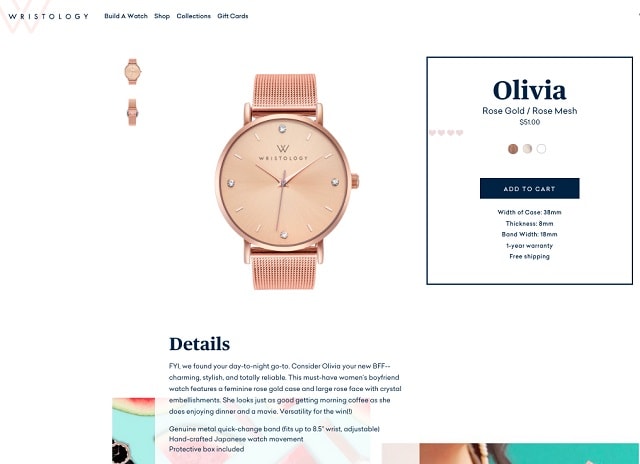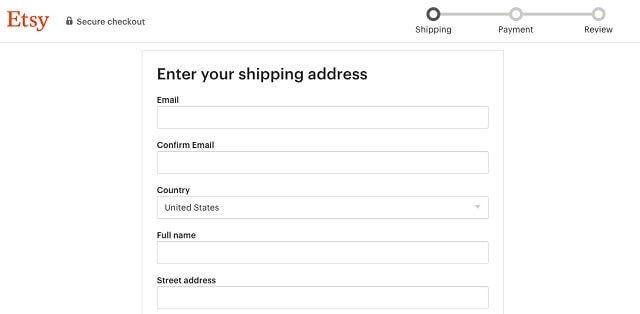This article was originally published on Nov. 13, 2019. It was updated on Nov. 5, 2020.
Impulse shopping is a phenomenon among digital consumers that’s only increased as we continue to stay at home and glued to our screens. You’ve likely experienced this scenario, you’re on your tablet or laptop and perhaps get distracted by an ad. Next thing you know, you’re considering buying a fun new item—because why not? You’re not alone; recent reports show impulse spending increased 18% during the pandemic.
The increase in online retail activity due to COVID-19 only further adds to impulse shopping. A new study found that more than one-third of consumers shop online weekly, a 28% increase from pre-pandemic rates. Another survey concluded similar results, estimating the impulse shopping industry reached nearly $45 billion this past year.
Ecommerce businesses can increase revenue by designing and optimizing sites that cater to impulse shoppers, especially around the busy holiday season.

10 tactics to turn impulse shopping into stone-cold sales
Use the following actionable strategies to make it easy for impulse shoppers to navigate and buy from your website.
- Keep it simple.
- Highlight your best-selling products.
- Plan for impulse shoppers on mobile.
- Use humor to engage shoppers.
- Make the checkout process a breeze.
- Offer different payment options.
- Secure your website.
- Consider targeted promotions.
- Test your site for ease of use.
- Offer free returns.
Grab your favorite holiday beverage and let’s dive in!
1. Keep it simple
Here’s a popular web design tip, but all the truer when dealing with impulse shoppers — keep your site simple.
Keep the focus on the most valuable information for consumers, like robust product descriptions.
Consider using a show/hide or accordion function so that site visitors can access further details should they want them. This will remove distractions and create a minimalist product page.
Once a shopper lands on their potential purchase, make sure your call-to-action (CTA) is clear as day. People need to know how to complete a sale — try for almost too obvious. Your CTA should use unambiguous terms like “Add to Cart” or “Purchase.” This isn’t the time for humorous copy or trying to include clever phrases on your purchase button (we’ll touch more on humor later).
Remember, impulse shopping is fickle. Keeping your product pages and CTA clear and concise will ensure shoppers won’t second guess their purchase.
Related: Quiz — Are you making these website design mistakes?
2. Highlight your best-selling products
When optimizing a site for impulse shoppers, you want to create an effortless experience, which is also a good practice to target really any shopper. For more established eCommerce retailers, you likely know which of your products are best sellers and why.
Make it easy for distracted shoppers who are slightly distracted and highlight those products on your home page, hero image, landing pages, or even via gift guides.
Remember, you want to close a sale, so stick with the hits.
However, a potential customer found your page, especially if they’re multitasking, they want to see what they came for, not be confused by different options.
For example, if you’re an organic candy retailer and impulse shoppers found you through a targeted Facebook ad, they want to see your flagship products, not the new vegan candles you’re testing out. Now is not the time to pitch unknown, unrelated or new products.
Related: Best practices for using images on eCommerce product pages
3. Plan for impulse shoppers on mobile
We have all heard it before — everyone is shopping on their phones nowadays, so if your site isn’t mobile-optimized, you’re losing out. Additionally, smartphone usage has skyrocketed as people continue to social-distance, as well as work from and stay at home.
 Recent stats from Google show that 80% of smartphone users are more likely to purchase from companies with mobile sites or apps that help them easily answer their questions.
Recent stats from Google show that 80% of smartphone users are more likely to purchase from companies with mobile sites or apps that help them easily answer their questions.
To make sure your site is mobile-friendly, use Google’s free testing tool or simply pull up your site on a smartphone. Make sure each page displays correctly (not distorted), loads quickly and that your mobile checkout is as seamless as the desktop version.
Related: 5 things you must do now to prepare for the holiday shopping season
4. Use humor to engage shoppers
When done correctly, humor sells. Especially with our current climate, we can all benefit from a little levity. Use this to your advantage and inject some humor into your eCommerce site to connect with shoppers, and potentially even nudge them to click that add to cart button.
Creative content and copywriting can be powerful assets when trying to engage with your audience.
If you feel like going for comedy is off brand or inappropriate, try to create relatable content in the voice of your target audience. Conversational copywriting can help you engage with impulse shoppers to sell your products.

5. Make the checkout process a breeze
If someone is impulse shopping, getting them to act on that spontaneity and put an item in a cart is half the battle. After that, you want to make it an effortless process to finish the transaction.
First things first, when it comes to checkout, do not force customers to sign in or create an account to complete a purchase. Research shows that 28% of cart abandonment is due to websites forcing users to create an account.

Another valuable tool to implement in your checkout process is a progress indicator.
These interactive meters help shoppers understand where they are in the purchasing process. After all, distracted shoppers are liable to be interrupted any moment, so make sure they know they’re almost done.

6. Offer different payment options
Someone who’s impulse shopping might not pull the trigger if they have to find or get out their credit card. Alternatively, if they’ve been buying several holiday gifts, they might be reluctant to enter their payment information for an impulse purchase. In short, the last payment details can be a strong deterrent for a spontaneous shopper, forcing them to reconsider.
Remedy this potential hurdle by allowing additional payment options like PayPal or ApplePay.
These are often saved on a shopper’s phone or browser, which offers them an easier route to buy the item.
7. Secure your website
Imagine the following scenario: you’re shopping at a site you’ve never been to before. All of a sudden, in a moment of clarity, while typing in your credit card number, you think; “Wait, this is a new site… is it even secure?” If you look up at the URL and see a little lock symbol, that thought can end right there, and you can continue on your merry way to more shopping.
However, if you don’t see an HTTPS or another type of security indicator, you might reconsider.
Even impulse shoppers are savvy shoppers. This isn’t their first rodeo — 84% of Americans are shopping online for something at any given time.
As an added bonus, Google uses security as a ranking factor, so not only will it bolster user trust and potentially convert more shoppers, but it will also help with your SEO. Refer to this guide for more info on choosing and installing an SSL certificate for your site.
8. Consider targeted promotions
Take a quick look at your analytics and see what days and times your site’s traffic is the highest. If you’re already seeing an uptick of visitors on times that might constitute impulse shopping (think late evenings or weekends), consider running targeted promotions during those times.
If you see a fair amount of traffic but not a consistently corresponding number of conversions, promotions can make a big difference.
Turn those shoppers into customers with a discount or deal specifically geared towards them. You could also set up free shipping for orders placed over the weekend.
Of course, crunch the numbers to make sure any promotion is feasible within your pricing structure and profit margin.
A recent survey found that 71% of Gen Z consumers would increase their purchase to qualify for free delivery. What’s more, the previously mentioned cart abandonment report found that 50% of people stopped a purchase because extra costs (shipping, tax, and fees) were too high.
A small incentive might be the tipping point needed when it comes to either closing or increasing sales with individuals who are impulse shopping.
Related: Product targeting on Amazon
9. Test your site for ease of use
A common website design mantra is to design your site like the user is either not web-savvy or. (To prove this, a UX designer even offered a viral drunk website testing service).
While we don’t suggest opening a bottle of wine and A/B testing your site, you can test functionality and make sure it’s as simple and straightforward as possible.
If you’d like to informally test your site yourself, here’s an exhaustive checklist of ecommerce elements and functionalities for high performance.
For those who want to integrate tools into your testing process, here are 18 free options to assess your eCommerce website.
Remember, you want to aim for the easiest possible UX so that any user can navigate (and buy) from your site before the impulse wears off.
10. Offer free returns
For retailers who still might feel apprehensive about targeting the impulse shopping experience, consider offering free returns. (First, make sure it’s financially viable to offer depending on your product and price point).
With free returns, even if a shopper has morning-after buyer’s remorse, they can still return the product without more of an investment.
A recent survey found that 96% of consumers would shop with an online retailer again based on their return experience. Two-thirds of shoppers (69%) also say they’re deterred from purchases by having to pay for return shipping.
Moreover, you always want a happy customer, whether they purchased after significant research and consideration, or on a whim during their lunch break.
Related: Transforming retail returns into positive post-purchase experiences
Get your site ready for impulse shopping
Online shoppers love the ease of one-click-ship, finding products from the comfort of their home, and the convenience of buying with their smartphone. When you throw a little impetuousness into the mix, folks are all the more likely to hit that purchase button.
Remember, as we approach the hectic holiday gift-giving season, more and more of your target audience will be shopping.
Experts predict that we’ll see a significant increase in digital sales, and holiday shopping will start even earlier due to COVID-19.
Make your ecommerce site super easy to navigate and optimize pages for those visitors. If impulse shoppers represent a significant portion of the industry, that’s valuable business you don’t want to miss!
The post 10 tactics to turn impulse shopping into stone-cold sales appeared first on GoDaddy Blog.




